
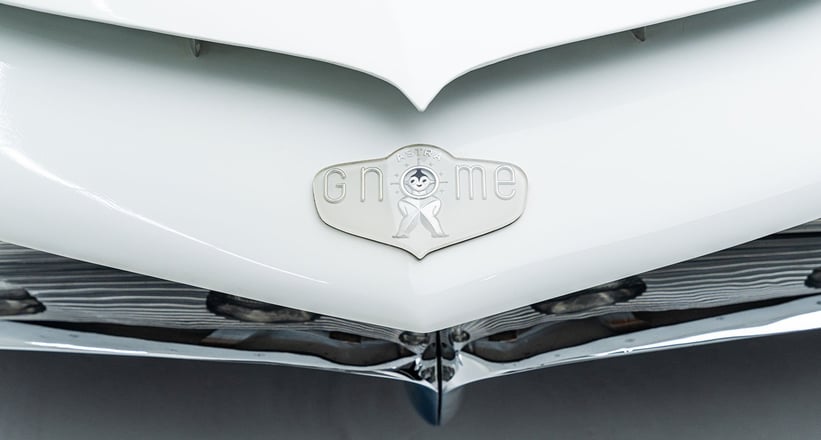
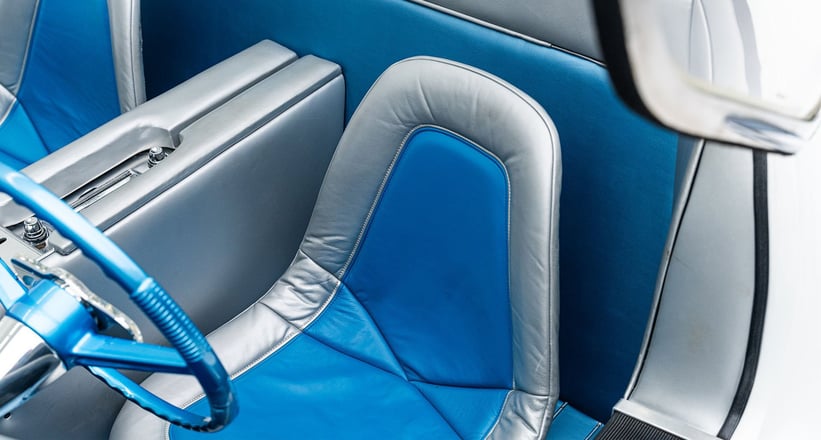
Take a look at some of the cars launched at the turn of this century and you’ll probably conclude that industrial designer Richard Arbib might have been disappointed by the modern-day auto industry’s lack of imagination. Granted, the Chrysler P/T Cruiser, the Ariel Atom and the Opel Speedster (to name but a few) looked pretty funky when they arrived in 2000, had Arbib been around to see them — he passed away in 1995 — he would probably have thought: “Why so ordinary?”

That’s because his vision of the type of cars we might be driving at the dawn of the new millennium looked like the one pictured here: the remarkable Astra-Gnome ‘Time and Space’ car that he penned on behalf of the American Motors Corporation to guarantee the manufacturer made a splash at the 1956 New York Auto Show. Arbib was called-in when AMC’s in-house stylists failed to meet the brief to come-up with a design that embraced the space-age zeitgeist of the era, by which time there was less than six months to go before the show opened its doors at the all new (and suitably modern) New York Coliseum.
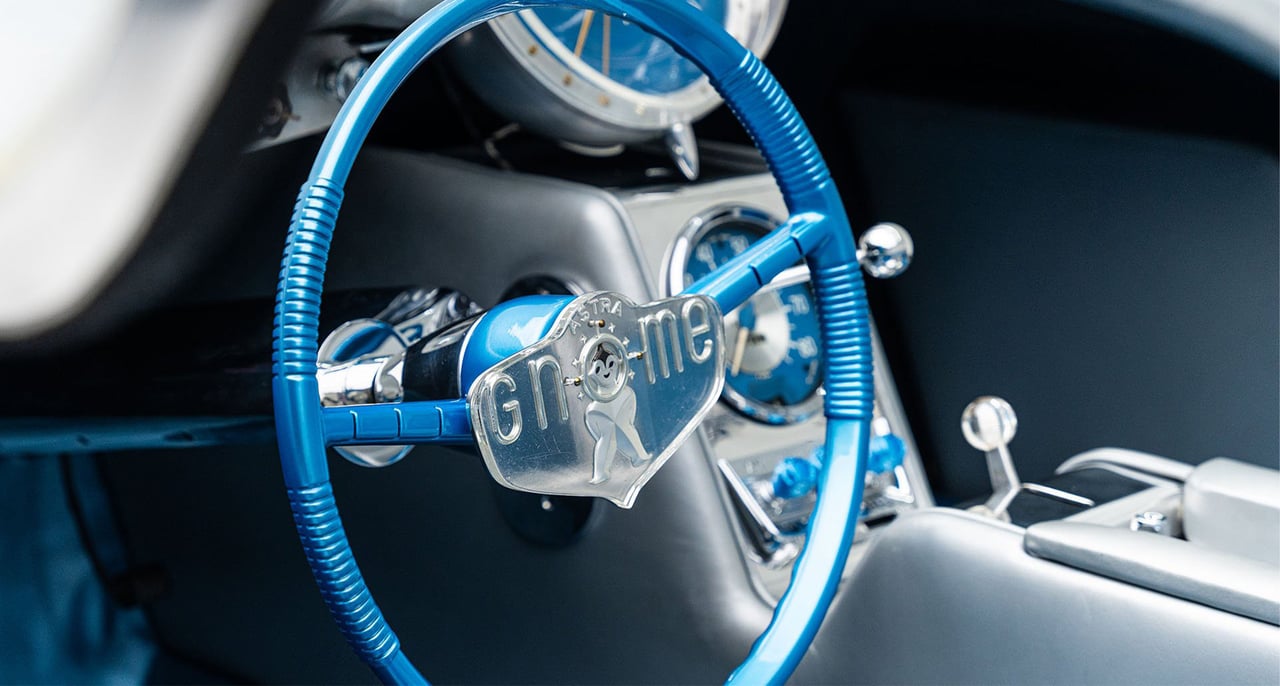
Unfazed by the short notice and already enamoured with the future (he was simultaneously creating the space-worthy triangular case for the Hamilton Ventura, the world’s first electric watch) Arbib set to work using a humble Nash Metropolitan as a base. Launched two years previously in 1953, the Metropolitan was already quite unusual, having been loosely based on the NXI (Nash Experimental International) concept car. It was intended to fill the role of second car in a two car family and was conceived — amid the shameless machismo of the time — for ‘moms’ to use for shopping and the school run, hence its small and manageable size.
Although it resembled a ‘full-sized’ Nash, the Metropolitan’s diminutive proportions did give it a strangely futuristic appearance. Compared with the Astra-Gnome that Arbib built around it, though, the standard car looked positively antiquated and, despite its luxury pretensions, decidedly basic.

Instead of the jazzy, two-tone paintwork popular at the time, the Astra-Gnome was hung with anodised panels made by New York’s Alcoa Aluminium that were intended to be made available in different colours in a sort of pre-cursor of the mix-and-match bodywork later pioneered by Smart. These brightened-up the sides of the hull-like body (which Arbib may well have been inspired to make by his work for the Century Boat Company), a creation that, while certainly off-the-wall, bristled with practical features.
As well as wrap-around ‘big car’ bumpers, it boasted retractable running boards, a quartet of powerful headlamps recessed safely into the car’s nose and a shield-shaped bonnet/hood that offered improved airflow to the 1200cc Austin A40 engine. Where Arbib really went to town, however, was on the part of the car that truly qualified as the ‘cockpit’.
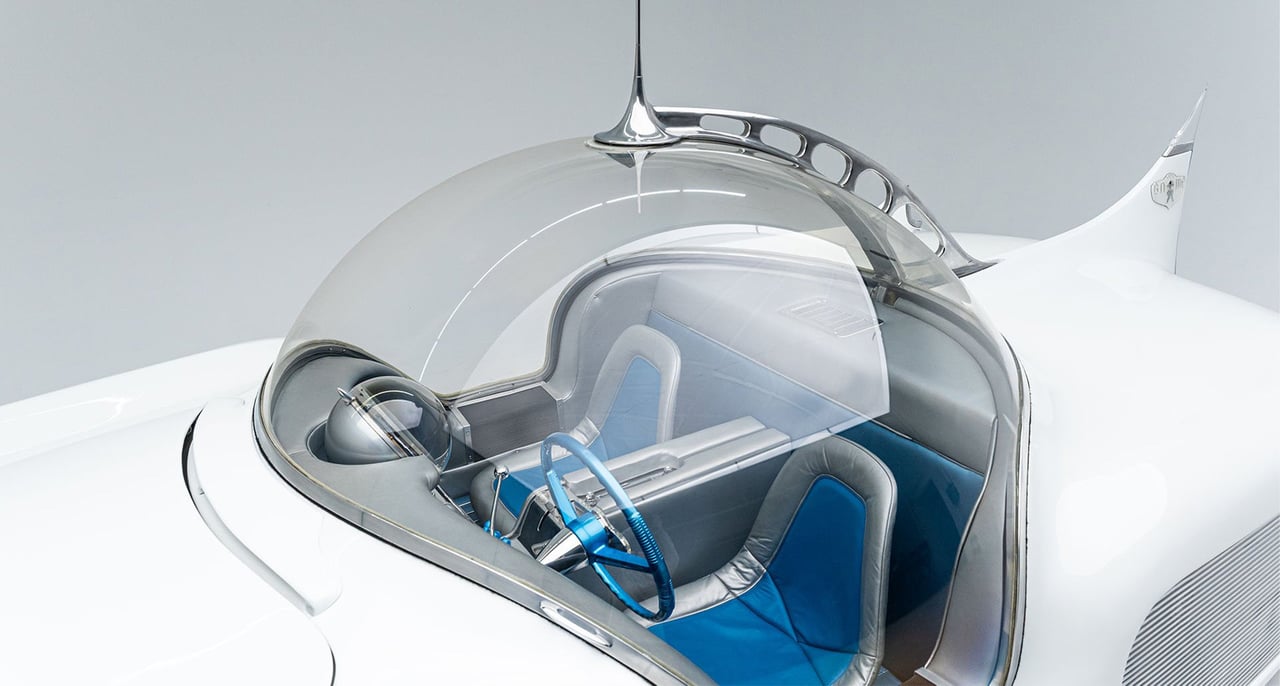
He specified a shaped, jet-like Plexiglas canopy that could be raised and lowered by an electric motor connected to an aluminium arm and which, when opened, allowed driver and passenger to climb in and out via stepped sides. As well as providing all-round vision, the canopy made for a light and open feel and, with the car’s air conditioning on full blast, probably gave the impression of travelling in a convertible.
Luxury touches included sculptural, leather-covered seats, deck-like flooring and padded armrests that enclosed a recessed centre console housing a ‘hi fidelity’ radio. Ahead of that, a stubby, decidedly modern-looking aluminium lever operated the handbrake before the console rose vertically to accommodate a small bank of switches and a mid-mounted speedometer.

Above that, however, sat the interior’s piece de resistance: a magnificent (and exaggeratedly large) celestial clock made by the aforementioned Hamilton — then an all-American brand — which was studded with diamond-like stones designed to represent twinkling stars in a nod to both the Astra-Gnome’s name and its space-inspired design. Bullet-shaped fixings (which may well have proved lethal in the event of an accident) adorned the clock’s perimeter to serve as compass-like cardinal points, while the thin-rimmed and minimalist steering wheel was wrapped in blue leather. Spanned by a one-piece, v-shaped spoke topped with an elaborate horn push, it was stamped with the car’s name and the image of an imaginarry ‘astra gnome’.
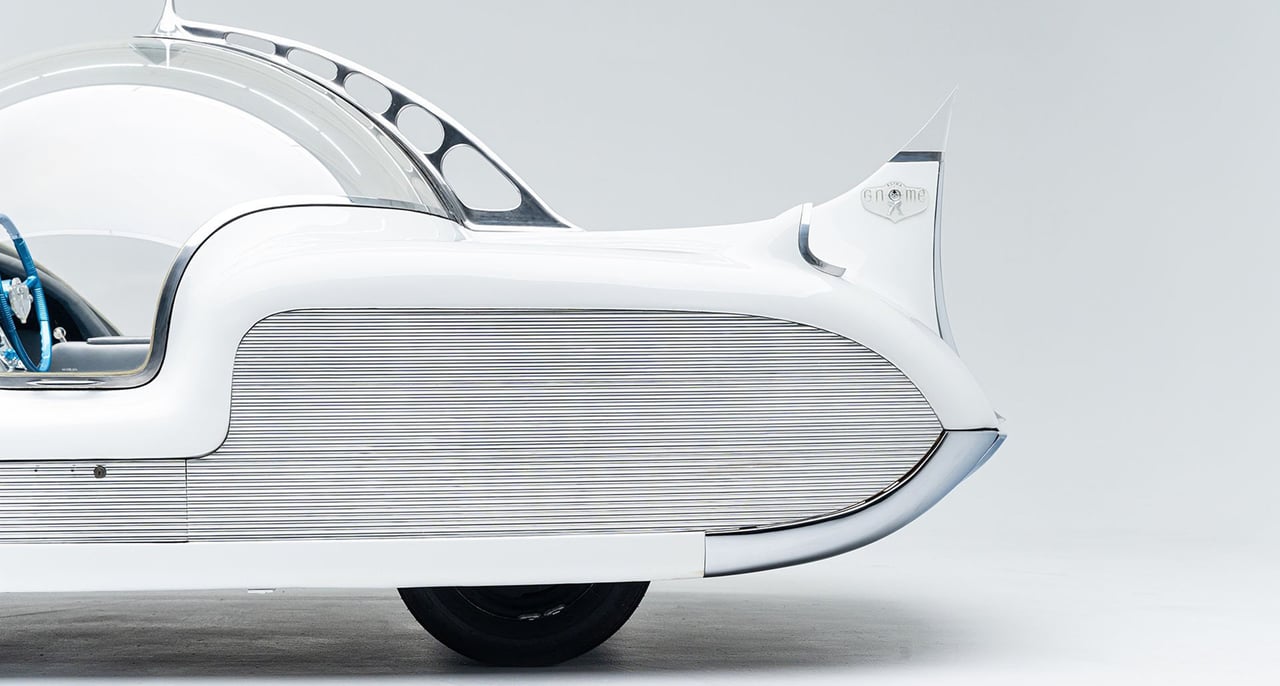
And Arbib didn’t stop there. This may have been a wild-looking concept car, but he wanted it to be thoroughly practical for daily use – perhaps even more so than the Metropolitan on which it was based. To that end, he used the additional space freed-up by the Astra-Gnome’s larger proportions to create compartments in and around the cabin, into which he fitted a six-piece integrated luggage system covered in blue leather to match the interior.
Although the car was always intended to be a showpiece rather than a production model, it was a fully working concept that could be (and was) driven in-period prior to suffering the fate of many such creations: being put into storage and forgotten about. It’s not known for certain when that happened, but the Astra-Gnome was thankfully re-discovered during the 1980s in the unlikely location of the upper floors of a New York high-rise.

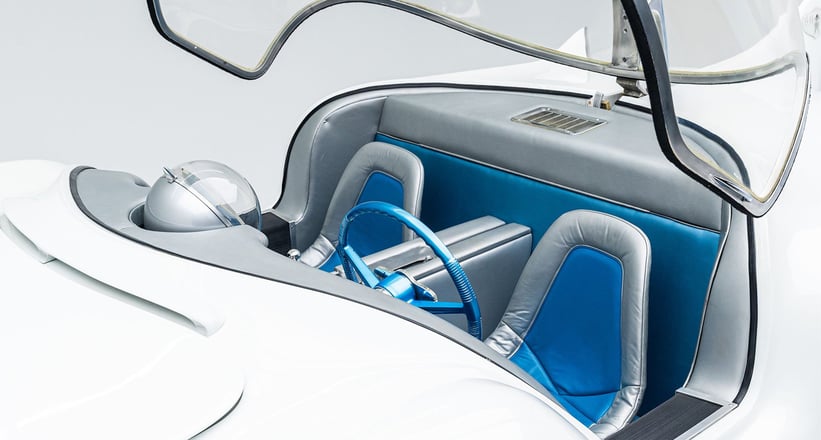

Subsequently restored to its former glory, the car is currently on show at the fabled Petersen Automotive Museum in Los Angeles, and will be there until November this year. Usually, however, it can be seen at the Metropolitan Pit Stop: a family-run California garage that can fairly claim to be the only business in the entire world that’s dedicated exclusively to the maintenance, preservation and restoration of Nash and Austin Metropolitans. Whether or not there’s a similar outfit operating elsewhere in the universe, however, is a question that perhaps only a well-travelled Astra-Gnome could possibly answer…
Photos: Petersen Automotive Museum





















